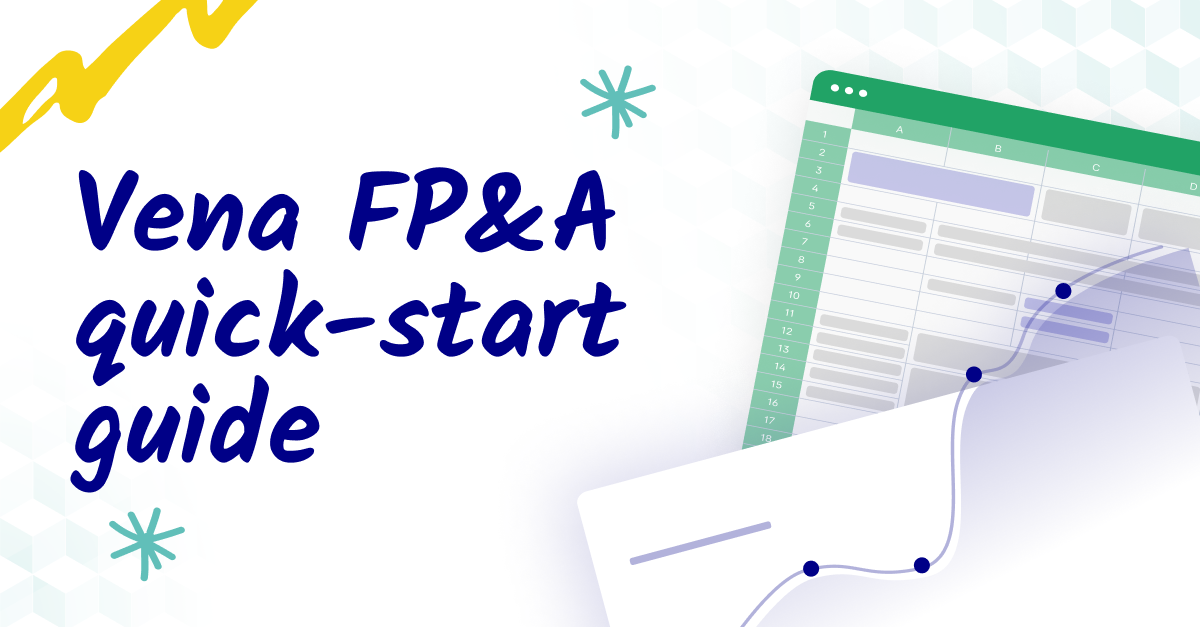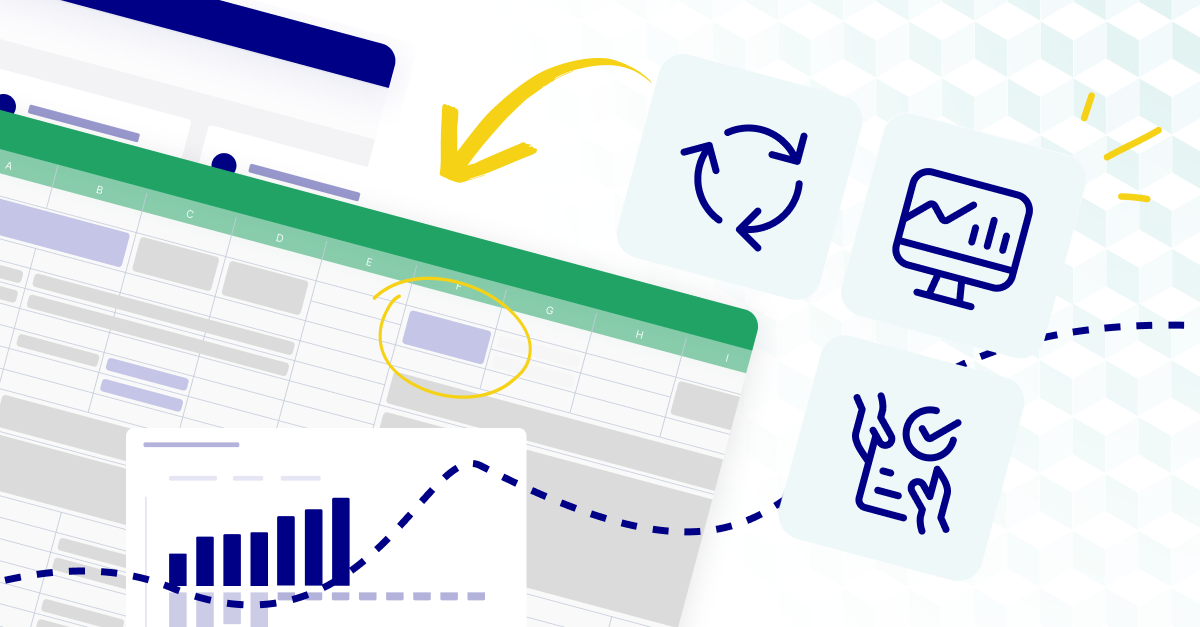What is FP&A (financial planning & analysis)?
Financial planning and analysis (FP&A) is the set of strategic activities (planning, budgeting, forecasting, and analysis) that enable a company's ongoing financial health and ability to grow.
From routine activities—like financial close and consolidation, cash flow reporting, and financial reporting—to strategic initiatives—including integrated financial planning, budgeting, scenario planning, financial forecasting, and financial modeling, financial reporting—FP&A covers a lot of ground. When done right, FP&A is the ultimate business historian and soothsayer: telling the story of the past and helping to write the story of the future.
Why is FP&A important?
Finance has a hand in everything. But while the entire Finance branch is responsible for tasks like record keeping, accounting, payroll, compliance and control, risk management, investor relations, and more, FP&A also focuses on the future: determining a company's financial performance.
That said, the actual value of the FP&A team comes when they provide insights by analyzing financial and operational data for executives and the broader company.
From headcount planning to budget decisions, FP&A dramatically influences a company's culture, growth, trajectory, and ultimate fate. FP&A teams must have a solid grasp of the company's short-term — and long-term — financial needs.

FP&A functions
The FP&A process is a constant flow of data analysis and collection. There are four major parts:
1. Data collection, consolidation, and verification
This consists of collecting all the financial and operational data from each business unit, ERP systems, data warehouses, and internal department. Data from external sources such as market, economic, and demographic data should also be collected.
From there, FP&A needs to consolidate the data so it's organized and easy to work with, then standardize and verify the data.
Verification is when the FP&A team checks the data for errors. This information must be accurate because every subsequent step relies on it. Since it is a time-consuming process, FP&A can use automation or AI-powered solutions to automate these tasks.
2. Financial planning and forecasting
After gathering data, the second step is to create financial forecasts that answer questions about the business's trajectory:
- How will we look next year if nothing changes?
- How will we look next year if we change X?
- What about in 5 years?
- What economic trends could impact our growth?
And so on.
Financial analysts use methods like:
- Predictive analytics: With predictive analytics, FP&A can model large data sets of past business performance and use that to predict future performance.
- Driver-based planning: This method requires FP&A first to determine the business's key drivers, that is, the variables that contribute most to the company’s success. Then, they develop a series of plans to quantify how those variables can affect the business.
- Multi-scenario planning: Using multi-scenario planning, FP&A anticipates future performance by creating plausible assumptions about future events and devising a strategy for dealing with such events should they occur.
Regardless of the technique, analysts must collaborate with business leaders across every department when planning — silos are not helpful.
Senior management can then use these detailed forecasts from the FP&A team to develop a strategic plan with high-level targets like NDR.
3. Budgeting
Now that the FP&A team has a clear view of their data, it's up to them to estimate the capital expenditures needed to execute the corporate financial planning based on the revenue from the strategic plan and actual performance. This financial framework serves as the budget.
With the budget, the FP&A team allocates expenses to each business unit and specifies an estimate of how much cash flow and revenue will be generated.
Then, they collaborate with the senior executives in each department to consolidate each department’s budget into one, leading to an overall master budget for the entire company.
The budgeting method used depends on the organization. However, most FP&A teams use zero-based budgeting, which enables them to evaluate expenses continually to avoid overspending or underspending.
In response to volatile market conditions, some FP&As use continuous budgeting cycles that allow them to update forecasts and projections.
-png.png?width=600&height=314&name=86%25%20of%20finance%20teams%20use%20Excel%20to%20makes%20forecasts%20and%20budgets%20(1)-png.png)
4. Financial performance monitoring and analytics
FP&A isn't a "set it and forget" department. FP&A teams are constantly analyzing data and monitoring performance throughout the company.
Beyond financial planning and analysis, these teams build reports and visualizations so that every department feels involved and informed in company performance.
FP&A teams develop expense budgets for the senior executives in each department, leading to an overall master budget for the entire company.
FP&A roles & responsibilities
While the CFO typically oversees high-level FP&A strategy, the department would be nothing without the team members digging into numbers daily.
Enter: the FP&A analyst. The FP&A analyst's primary focus is analyzing and influencing the company's financial performance.
The typical FP&A analyst position can span various roles and responsibilities, including:
1. Financial data collection
FP&A analysts are responsible for collecting data internally and externally.
Then they consolidate departmental data and market research to benchmark performance against industry standards.
The next step? Data hygiene. FP&A analysts must be confident that their numbers are correct.
Being confident in their numbers means they must check, double-check, and check again before they begin anything else.
...If you think there must be a better way, there is.
After all, 75% of FP&A time is spent on no-value-add tasks like gathering and cleansing data.
(Let's put a pin in this for now.)
.png?width=600&height=314&name=75%25%20of%20FP%26A%20time%20spend%20on%20no-value-add%20tasks%20(1).png)
2. Creating and preparing detailed reports: profit & loss, board reports, variance reports & more
Data holds little value without thoughtful financial analysis.
That's why FP&A analysts collect data and aggregate, map, and analyze it to determine value, make budgeting decisions, form KPIs, and more.
After performing this analysis, FP&A creates dashboards, reports, and financial models so internal stakeholders can understand and monitor their financial performance.
And, of course, reports are never a one-and-done task. It's up to the FP&A analyst to regularly update these reports as new information rolls in.
One example is the monthly close, especially at companies without a dedicated accounting department. At the end of each month, finance needs to "close the books," which means they review, record, and reconcile their financial affairs.
But the monthly close is notorious for taking a long time — in some cases, it can take the entire month.
3. Managing financial databases
All that data has to be kept and organized somewhere.
And there's more:
As more data comes into the team, it's more likely that mistakes will happen or that some of the data will get corrupted.
So the FP&A team has another important job: managing the financial database.
But this means more than doing their due diligence to check and double-check that their numbers are accurate.
It also means maintaining the financial database. Typically, the financial database lives on a tool (like Cube) that integrates with the Excel spreadsheets where the corporate financial analyst actually does their work.
Make no mistake: the cost of bad data hygiene is high. This is an integral part of the job and can affect critical business decisions across an organization.
4. Maximizing the effectiveness of operations
Until now, we've talked about the historical, backward-looking function of FP&A.
Many FP&A teams indeed find themselves saddled with the vital work of creating reports, managing data, and the monthly close.
(We'll call this "encumbered" FP&A.)
But "unencumbered" FP&A teams outsource much of that work (to a dedicated accounting department) or use cloud-based solutions and software to automate it. This frees up their time for what FP&A does best: maximizing the effectiveness of the business.
They do this by looking at various key performance indicators and metrics. These numbers tell the FP&A team valuable information about the performance of specific endeavors and how to improve them.
One of the most accessible metrics is the SaaS magic number.
The magic number (as it's known) measures the effectiveness of the sales and marketing team.
When it's over a certain threshold, it's a sign to pour more money into your campaigns. When it's under that threshold, it's time to revisit strategy and conversion rates.
This is just one example of how FP&A can dramatically change the tide for an entire organization.
5. Create scenarios, forecast, and model possible futures
This is the core of FP&A's job.
But first, let's back up a little. Who does FP&A report to? FP&A reports to the people who drive company strategy — the CEO, leadership team, and Board.
While these people care about the company's current performance, they're also invested in the future of the company. What does it look like?
Moreover, they often have specific questions.
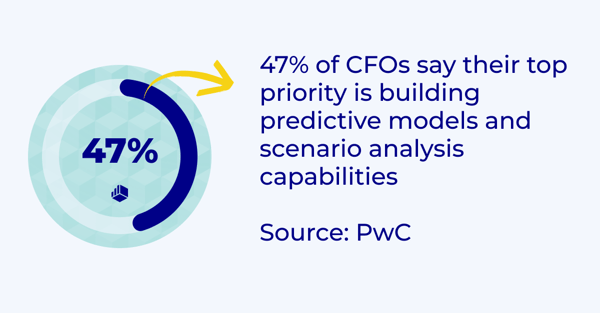
For example:
- If we hired four more account executives, how much more revenue could we expect to generate by the end of Q2?
- How does that affect our ability to hire more customer support associates if those new hires underperform by 10%?
- What about by 15%?
- If we need to generate 20% more pipeline than our current rate, do we also need to hire someone new in marketing?
- If our profit margins are 24% what growth rate do we need to hit the Rule of 40?
To answer these questions, FP&A creates growth scenarios and forecasts to model the future.
And to do that, everything else has to work—data analysis, reporting, data hygiene, and performance optimizations.
6. Budgeting
As said before, FP&A controls how many things are done in the organization, including creating an estimate of revenue and expense metrics that the company should achieve (i.e., revenue, cash flow, runway, burn rate, etc.).
The FP&A team is expected to plan annual, quarterly, monthly, and special budgets based on historical data from analyzing the company’s past performance, current data from market trends and conditions, and future growth forecasts.
On a lower level, the FP&A also determines how much money is assigned to teams to carry out their tasks, such as the amount given to sales and marketing to invest in their campaigns.
7. Profit margin management
After creating budgets, FP&A teams are responsible for assessing the level of compliance with the given budgets. That is, to check how much revenue and cost each department generates compared to the amounts set.
This could be done monthly, quarterly, or annually, and it is how the organization monitors which teams, products, or services are operating at a loss or generating the most money for the company.
Another duty tied to profit margin management is assessing the business’s working capital and investments to find new investment opportunities that could lead to higher profit margins.
8. Other FP&A skills
Working as an FP&A isn’t all about sitting at a desk and making forecasts, analyses, and scenarios.
For an FP&A to achieve the roles listed above, they are expected to have other skills, such as communication and collaboration, which enable them to understand the responsibilities of other teams in the organization.
Occasionally, FP&A might be required to act as an advisor to these teams or even lead them on projects so you must be able to lead other employees to achieve set goals.
Communicating complex data insights to employees outside of finance can be tricky, so data visualization and storytelling techniques are also skills that FP&A needs to present data in an easy-to-understand way.
More about FP&A jobs & roles
Here’s more information about getting into an FP&A role:
Is FP&A a good job?
According to research, FP&A is the thirteenth fastest-growing role in the US. FP&A is a career choice that pays in the long run, and it is especially great if you enjoy:
- Communicating with key stakeholders at all levels of the organization
- Crunching numbers and doing complex math
- Visualizing and presenting data in a compelling manner
- Consolidating and reconciling financial data
- Understanding complex data sets
- Working with formulas in spreadsheets and creating reports
- Performing data analysis using automated tools like ERP
Regarding compensation, FP&A pays relatively better than most jobs, with entry-level roles paying up to $90,540 yearly.
FP&A positions
FP&A job positions vary depending on the organization, but there are three common positions across organizations. The positions and their main responsibilities are:
Vice President of FP&A
- Controls the process of scenario building and preparing financial models and statements
- Collaborate with IT and the organization as a whole to optimize and automate forecasting.
- Analyze financial results to generate key insights and make recommendations to management.
- Ad hoc financial modeling and reporting
FP&A Manager
- Analyze organization operations and financial results to understand the business’s overall financial health and position.
- Formulating models that project opportunities for long-term growth
- Analyzing the performance of each department or team and providing insights for improvement
- Collaborating with leadership to determine short, medium, and long-term strategies and financial plans
Corporate Financial Analyst
- Track profit margins and expenses generated by business units and cost centers
- Forecast future outcomes using financial models and analyzing financial data.
- Evaluate the financial performance of departments, products, and services by comparing forecasted plans with actual results.
- Prepare financial performance reports based on specifications by leadership.
Other FP&A positions include FP&A intern, associate, coordinator, finance business partner, director of budgeting, director of financial reporting, director of business analysis, etc.
FP&A salary
The salary of an FP&A analyst depends on various factors, including level of skill, location, and the type of company.
According to Indeed, the average base salary of an FP&A analyst with at least 1 to 3 years of experience in the US is $94,012, with the salary range estimated at $68,073 to $129,834 excluding bonuses.
On Glassdoor, the range is estimated at $106,477 to $147,916, including bonuses.
FP&A career opportunities
Career progression in FP&A starts with entry-level roles like analyst. After 2 to 3 years, one can advance to senior analyst, manager, director, or vice president of FP&A. Each role has similar functions but higher levels of responsibility and leadership in financial strategy and analysis.
With the right education and commitment to the role, there’s potential for becoming CFO. Many CFOs start their career in FP&A because it provides a comprehensive business strategy and financial planning background.
FP&A education
According to the Certified Corporate FP&A Professional (FPAC), the educational requirement for an FP&A role is a bachelor’s or equivalent degree in accounting, economics, finance, or business.
Individuals on this career path could also pursue additional certifications covering topics such as financial modeling, variance analysis, and budgeting. Further educational requirements for getting into higher-level roles are a CFA or MBA and completing at least two years of banking rotational program.
FP&A certifications
FP&A certifications are valuable credentials for finance professionals seeking to enhance their expertise and career prospects in Financial Planning and Analysis.
These certifications, such as the Certified Corporate FP&A Professional (FPAC) and Chartered Financial Analyst (CFA), validate a professional's knowledge and skills in areas like budgeting, forecasting, data analysis, and strategic financial planning.
What is the difference between an FP&A analyst and a financial analyst?
A financial analyst mainly tracks trends, creates data models, and analyzes financial statements to help the organization make investment decisions.
The FP&A also provides financial analysis but on an organizational level. They forecast future revenue and expenses by analyzing current and historical data and develop plans that cover all business areas, not just investment.
Is FP&A an accountant?
Although FP&A is similar to an accounting role, they are not the same. The accounting role focuses on recording and reporting financial transactions while ensuring compliance with regulatory standards.
The FP&A role is rather forward-looking, focusing on forecasting, budgeting, and analyzing financial data prepared by accountants to guide future business performance.

FP&A software & solutions
Finance teams at SMBs typically combine the spreadsheet (usually Excel or Google Sheets) with an accounting tool like QuickBooks. And this works, to a point. But, the tools need to improve as the organization grows and as organizational complexity increases.
That said, there's nothing wrong with Excel or Google Sheets. These tools are the backbone of FP&A because they're easy to use, robust, and reliable.
It’s no surprise that 81% of the people who rip and replace their spreadsheets with some sort of software revert back to them.
But spreadsheets have a few limitations that become challenging as data gets more complex. For example, many small teams use Excel as a database. But Excel was never designed to be a database, so it fails to do the job after a point.
The solution?
Many teams fall into a trap: replace Excel.
The logic goes something like this: Excel used to do all our heavy lifting, but now it's becoming more of a hassle. Things are breaking, and the planning process is grueling.
Therefore, we need a new tool to replace Excel.
But this thinking is flawed.
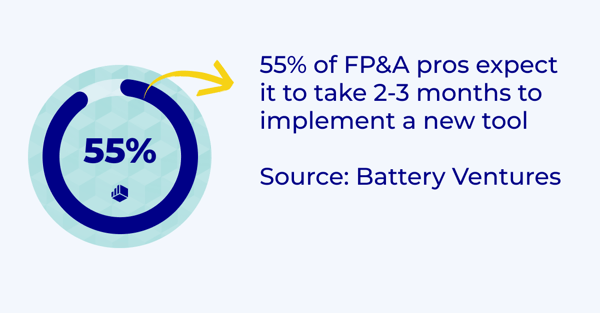
The problem isn't that Excel can't scale. It's that it was never designed for this use case.
Instead of replacing Excel — which was already working in every other respect — add a database. Let Excel do what it does best and outsource what it doesn't.
Part of Cube started with this insight. Excel is easy. Everybody knows how to use it, corporate financial analysts live in it: why reinvent the wheel?
Most finance leaders that Christina Ross spoke with when she was building Cube knew they needed to augment Excel with some external tool. They'd even started their search, but many paused or gave up altogether.
Why?
Because they didn't want to deal with the never-ending implementations or learning curves of what existed on the market.
Put another way, legacy FP&A software is universally reviled.
That's why she built Cube.
...but that's a story for another day.

The FP&A software stack
Most FP&A solutions fall into three categories: the source system, the database, and the FP&A tool.
The source system is where the raw data lives. These might include:
- Accounting/ERPs (Sage Intacct, NetSuite, QuickBooks, Xero, PeopleSoft, etc.)
- Human Resources/Payroll (ADP, ChartHop, Greenhouse, Lever, Justworks, etc.)
- Billing & Operations (Chargebee, Zuora, Ordway, etc.)
- Sales & Marketing CRMs (Salesforce, HubSpot, etc.)
- BI tools (MongoDB, Power BI, Tableau, Microsoft Azure, etc.)
Then there's the database, which organizes and ensures all this data is clean. Sometimes the database isn't a discrete tool. Some tools have extra functionality on top of being a database.
Cube is one of these tools. These tools can:
- Read in and unite data from your source systems
- Organize, consolidate, and clean said data (like a database)
- Bidirectionally interface with the spreadsheet through a native integration
(Learn more about how Cube works.)
Finally, there's the actual FP&A software for analysis and forecasting. The best-known FP&A tool is Microsoft Excel. Many teams also use Google Sheets to make collaborating across the organization more fluid.
However, there are many tools that either augment or replace the spreadsheet altogether. Those are the tools FP&A teams today use:
(See more in our list of top FP&A software tools.)
Benefits of FP&A software
The FP&A team needs software that will help to automate some of the many tasks they have. Here are some of the many benefits they’ll gain by using FP&A software:
Determine financial health
According to the AFP, 53% of FP&A professionals say that the software they use for analysis elevates the quality.
Through robust analytics tools that can be used to extract insights from the company’s financial data, FP&A software enables businesses to determine the accurate financial health of the business.
Predict the financial impact of decisions
FP&A software helps to predict the financial impact of business decisions taken based on scenarios and forecasts. It can be used to analyze things like revenue, expense, sales, etc, to determine whether a decision would be profitable.
For example, if the company wants to buy new equipment, FP&A software can be used to forecast the equipment’s impact on profit based on how much it costs, how long it would be used for, and the value of items it would be used to produce.
Build & maintain financial models
56% of finance teams perform forecasting and financial modeling monthly, and 19% do it weekly. Having to build and maintain financial models regularly and keep track of all the models can become overwhelming without a tool to streamline the process.
With FP&A software, teams can easily build financial models at whatever frequency they need to and never worry about losing track of their progress.
The software also provides pre-designed customizable templates that allow FP&A teams to simply input data and variables and adjust the template to fit their needs.
Easier interdepartmental collaboration
Traditionally, FP&A teams worked in Excel sheets, and while they are effective for computing data, they don’t support seamless collaboration between teams.
FP&A software, however, provides a centralized platform for departments to share financial information and work together.
The software facilitates discussions where everyone can comment, share ideas, and feedback, and keep up with each other's functions. With this platform serving as a single source of truth, all departments can remain aligned on goals and strategies set by the FP&A team.
Alleviate risk & uncertainty
FP&A teams need tools that allow them to easily model multi-scenario planning and what-if scenarios so that they can develop a foolproof strategy based on data insights rather than subjective guesswork.
For example, if the team wanted to visualize a what-if scenario like what may happen if prices plummet due to a recession, FP&A software could be used to calculate the financial impact of dropped prices on revenue.
With FP&A software allowing real-time data monitoring and adjustments, FP&A teams are assured that they are making data-driven decisions, alleviating risk and uncertainty commonly attached to forecasting.
Key features of FP&A software
Not all FP&A software is created equal. What you choose ultimately depends on your needs as a business and how you and your team prefer to work, but here are the essential features that you should benchmark any FP&A solution against:
- Data consolidation
- Multi-scenario analysis
- Spreadsheet integrations
- Customizable dashboards
- Multi-currency support
- User-based controls
- Shareable templates
- Audit rails
- Centralized formulas and KPIs
(Learn more about how to pick the best FP&A solution for you.)
What to look for in FP&A tools
Those seeking an FP&A solution should keep four critical things in mind as they evaluate potential providers:
- Implementation time. How long does this tool take to implement? Cube takes at least 2 weeks, with added time to account for additional integrations. Other tools, like Anaplan and Adaptive, are notorious for taking months and requiring external consultants.
- Ease of use. Likewise, you want an FP&A tool that's easy to use. Does the tool work with Excel and Google Sheets (the software everybody already knows how to use)? Is the interface intuitive, or will you need to spend months learning how to use the tool and teaching new team members how to use it?
- Scalable FP&A software. Will this solution grow with you? Does it work for companies of all sizes, or is it limited to SMBs or monolithic enterprise organizations? Likewise, how many use cases does it support? Can you use this tool in new and creative ways, or is it a one-trick pony?
- Customer support. You'll interact with customer success no matter which tool you choose. Does this company have a track record of providing stellar customer success?
Recommended FP&A software
Here’s the best FP&A software to help automate and optimize the FP&A team’s processes:
1. Cube

Cube is the first spreadsheet-native FP&A platform that functions as a single source of truth for your source systems and lets you quickly push and pull data into Excel or Google Sheets. In other words, Cube automates all the manual, error-prone work so that you can focus on the analysis and FP&A forecasting that bring tangible results to your company.
2. Microsoft Excel

Excel needs no introduction. This classic go-to software for FP&A and strategic finance professionals is still widely used today. Moreover, Excel is so beloved that most attempts to replace it with another tool fail outright.
3. Google Sheets

Google Sheets offers a user-friendly interface that is widely used, not just in FP&A or finance. It also works on all computers and has some great features that Excel does not offer. While most finance pros prefer Excel, Google Sheets makes numbers more accessible, easier to understand, and transparent.
4. Workday Adaptive Planning

Workday Adaptive Planning offers strong capabilities outside of Finance and FP&A, which makes Adaptive Planning a good choice for large enterprises seeking a transformational, company-wide FP&A solution. However, its lengthy implementation timeline and "replace spreadsheets" philosophy means it's not a fit for everybody.
5. Anaplan

Anaplan works well for larger enterprise customers with a strong IT team ready to lead an enterprise-scale transformation initiative. Like Adaptive, it has a long implementation cycle and replaces Excel. It is also a cloud-based solution that allows users to centralize their data sources on a single platform.
6. Planful

Planful is ideal for larger companies with large FP&A teams that want to expand their scope of influence beyond finance. The software provides businesses with a platform similar to Excel on which to work on complex financial processes. It also allows users to automate data collection and aggregate data for automatic validation.
7. Vena Solutions

Vena is ideal for companies that need the fixed process and planning guidance of pre-built FP&A solutions or have the resources to uniquely customize those pre-built solutions for their own needs.

Emerging FP&A trends
In this section, we explore the cutting-edge and emerging FP&A trends that are reshaping the industry.
As the financial landscape continues to evolve, so do the tools, strategies, and trends that drive success in Financial Planning and Analysis (FP&A).
Cloud-based solutions
The adoption of cloud-based financial planning and analysis tools will continue to rise, allowing for greater flexibility and accessibility in financial modeling and reporting.
Cloud-based solutions provide real-time access to financial data as long as people have internet connectivity.
This will enable agile teams to easily access whatever information they need and work together smoothly, regardless of location.
Advanced analytics and data integration
FP&A teams will increasingly rely on advanced analytics tools and integrate data from various sources to gain deeper insights into financial performance.
They can leverage tools like financial modeling and machine learning algorithms to identify trends and potential risks they might normally miss.
Integrated data plus advanced analytics will help FP&A teams make more accurate forecasts and better business decisions.
Predictive forecasting
The use of predictive analytics and machine learning algorithms will become more prevalent in forecasting future financial outcomes.
This will help organizations make more accurate predictions and prepare better for future business outcomes.
Organizations will also be able to adapt faster to changing business conditions and optimize their performance.
AI and automation
Automation of routine financial tasks and the use of AI-powered financial tools will increase efficiency in FP&A processes, reducing manual errors and saving time.
Beyond automating manual tasks, AI can also be used to predict future outcomes more accurately, as FP&A teams would be able to process more data.
AI and automation will reduce operational costs and help organizations allocate resources effectively.
Remote work and collaboration tools
The shift toward remote work will drive the use of collaboration tools and technologies in FP&A to facilitate communication and teamwork among distributed teams.
Tools like Google Meet, Slack, Asana, and Cube will allow FP&A teams to share documents, collaborate on financial models, and have virtual meetings where decisions will be made.
Collaboration tools will help everyone remain aligned when they work remotely.
Sustainability and ESG reporting
With a growing emphasis on sustainability, FP&A will play a role in measuring and reporting on environmental, social, and governance (ESG) factors' financial implications.
This means FP&A teams would be responsible for including ESG metrics in their financial analysis to provide the organization with a performance benchmark to work with.
They would also collaborate with other teams to develop an ESG reporting framework that aligns with industry expectations.
Key FP&A challenges
With the FP&A team having to keep track of a lot of data, forecast multiple scenarios, and collaborate with other teams, they face certain challenges, such as:
Data gathering, aggregating, and warehousing
Raw data exists in source systems. But it's not very useful to FP&A there.
To do something with those numbers, FP&A must aggregate financial data into a single source of truth.
But this presents a couple of problems:
- What happens if those numbers don't match?
- How do they get to the database? Could there be some human error?
- Can the data get corrupted inside the database?
Likewise, raw data also exists within each arm of the company. To create the budget for each year, FP&A has to get those numbers from department leaders.
Data gets segmented by time — usually by month — and FP&A has extra work for expenses or numbers that cross those timelines.
To have consistent internal logic and accurately report on the state of the business, all of this data needs to be accounted for, reconciled, and housed.
After all, a single error can snowball into a wrong prediction or recommendation.
Accurate and unbiased reporting
Likewise, FP&A needs to create accurate financial statements and reports.
Sometimes this is as simple as setting up a dashboard to get a bird's eye view of business trends.
But other times, it requires custom calculations and digging into unusual perspectives.
As with everything else in FP&A, the threat of human error is here too.
But there's also more nuance—are we creating the correct report? What is this being used for? What are the conclusions we want people to draw from this report?
FP&A also has to understand the biases of its stakeholders (what do they desire to see?) and design reports that not only accurately reflect reality but also are not biased or misleading.
Budgeting
The budget determines almost everything.
Which business units grow (and how), where resources get put (or not), and which objectives a company chases (and which they ignore).
The annual budgeting process is no small feat: it can take months for some companies. During this time, FP&A has the classic "if you serve too many masters" problem—department leaders want one thing, the Board wants another, and the data says something else entirely.
How do you make everybody happy? Well, you don't. You make trade-offs. Often, the full picture emerges after everybody has made their case.

Strategic budgeting based on financial forecasts unifies the business's direction. It accounts for different scenarios and projects a desirable end state for the compass. It uses financial models to set priorities and guardrails.
What's in the budget is just as important as what's not in the budget.
Financial forecasting and monitoring financial health
Forecasting estimates the tangible results realized by deploying the available budget.
For example, if Sales has a budget for ten sellers and expects each to win $10,000 in new business next month, the sales forecasts for new revenue would be $100,000.
As another example, suppose customer success has been trying a few initiatives to reduce churn and increase NDR. FP&A can create more accurate forecasts to measure the impact of each initiative—and even advise which one to focus on.
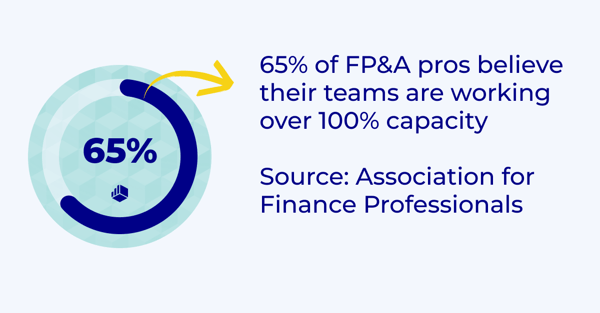
Likewise, when teams are not on track—even if the budget is being followed—FP&A can forecast how far away from the desired end state the company will be by the end of the fiscal year. Once they have the needed business intelligence, they can make recommendations to correct what's happening today and get teams back on track.
Get support for your FP&A team
FP&A has become a key player in helping businesses make smart decisions based on data, predicting the future and being flexible in a fast-changing environment.
As we've explored the world of FP&A in 2024, it's clear that it's no longer just about numbers; it's about guiding companies toward success.
By using advanced technology, data analysis, and a focus on big-picture insights, FP&A professionals are now strategic partners in helping businesses thrive in a constantly changing economy.
If you're looking to enhance your FP&A processes and save valuable time, it’s time to consider Cube, a powerful FP&A software solution. Get started by requesting a free demo today.
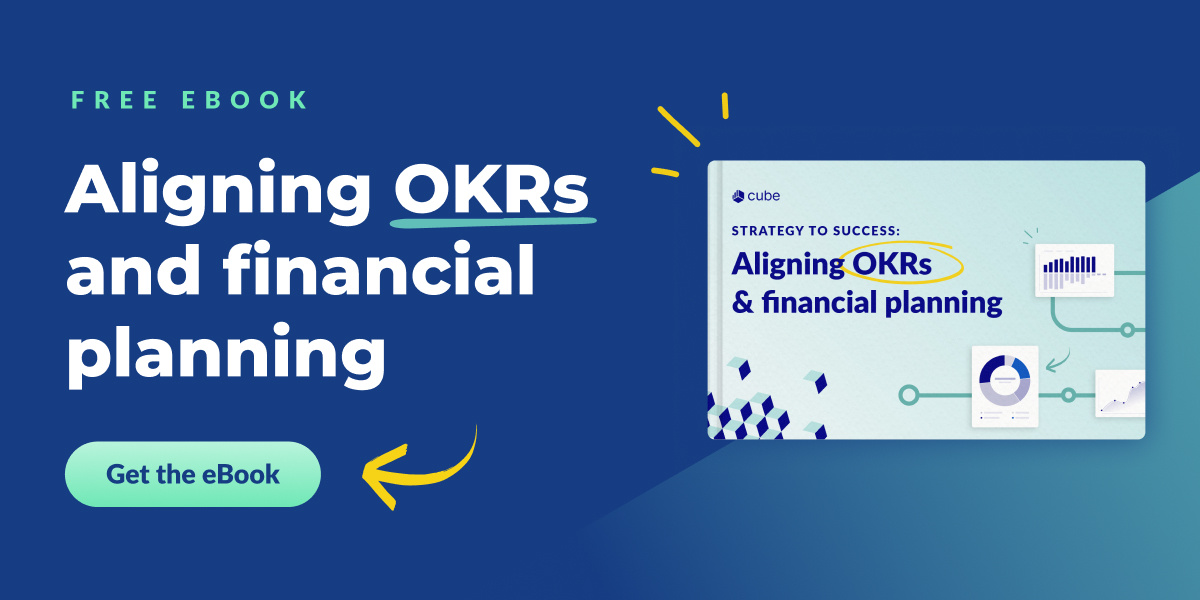


.png)









.png)
.png)
.png)

-png.png?width=600&height=314&name=86%25%20of%20finance%20teams%20use%20Excel%20to%20makes%20forecasts%20and%20budgets%20(1)-png.png)
.png?width=600&height=314&name=75%25%20of%20FP%26A%20time%20spend%20on%20no-value-add%20tasks%20(1).png)


.png)
